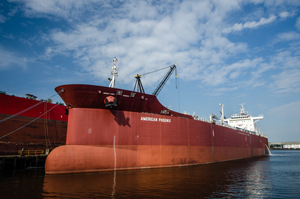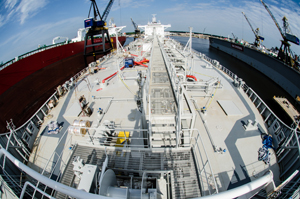American Phoenix is a vessel reborn from the ashes, the lone survivor of an ambitious plan by Shell to build three top-of-the line Jones Act product carriers that could deliver petroleum to Florida’s shallow-draft ports more efficiently than the competition while reaping the benefits of diesel-electric propulsion and technological wizardry.
It almost didn’t make it. By the time the 49,000-dwt tanker left Lake Charles, La., for Port Canaveral, Fla., on its maiden voyage in August, more than four years had passed since steel was first cut in 2008. Shell had pulled out, the operator that ordered the ship had gone bankrupt, and the vessel itself had spent months in mothballs in the Mobile, Ala., yard that was overseeing construction.
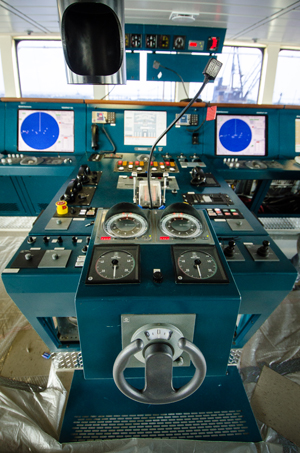 |
|
“It would have been the greatest sin in the world to have left this ship to not be completed,” said one of the new investors who rescued it. |
Also in tatters was the “virtual shipyard concept,” the notion that the only way to build a ship this complicated and keep the cost down was to parcel it out into different modules at different yards and bring everything together for final assembly. It has worked elsewhere; on a smaller scale, Kvichak Marine Industries and Nichols Brothers Boat Builders in the Pacific Northwest built two 118-foot ferries for San Francisco Bay in modules at different yards (ASR 2008-9). But for many reasons, ranging from hurricane damage at one yard to an apparent inability to coordinate the overall construction process, things fell apart.
Rescuing the vessel from the ashes wasn’t easy. Joe Shellenberger, the yard’s project manager for the ship since 2008, had to shut it down, then scramble to solve engineering issues when construction restarted.
Nevertheless, the surviving vessel is a remarkable ship. On arrival in Port Canaveral, Capt. Kurt Yost praised its safety and environmental features, and Chief Engineer George Hutchins described it in American Maritime Officer as “robust, modern and built to last.” American Phoenix is the first U.S. vessel built to the Common Structural Rules adopted by the International Association of Classification Societies.
Unlike the competing Jones Act tankers that General Dynamics Nassco and Aker Philadelphia Shipyard were building to South Korean designs when construction on this vessel started (ASR 2007-08 and 2009-10), American Phoenix has diesel-electric propulsion and a twin-screw, twin-rudder design, giving it redundancy, flexibility and maneuverability. Its crew (the operator is Seabulk Tankers) summed it up in the caps they wore for the maiden voyage: “Everything Else Is Just a Two-Stroke.”
 |
At 616 feet by 105 feet with a design draft of 36 feet, American Phoenix is the largest vessel ever built and launched in Alabama. Propulsion comes from three medium-speed MaK 12 M 32 C generator sets equipped with Siemens alternators, driving two 4,650-kW propulsion motors. The range is 12,000 nautical miles and the service speed is 14 knots.
The designer, Aker Yards Marine (now STX US Marine), of Houston, incorporated several unusual features. The engine room is spacious, and the engines are not exactly on the centerline (the weight is counterbalanced elsewhere). The bulbous bow is an atypical shape, and the pipe racks on the cargo deck are slightly offset to the port side instead of running down the centerline. The deckhouse is comfortable as well, with single cabins for ship personnel.
In one sense, the rebirth of American Phoenix began with its sale at a bankruptcy court auction in January 2011. But the factors that made it possible were taking shape before then.
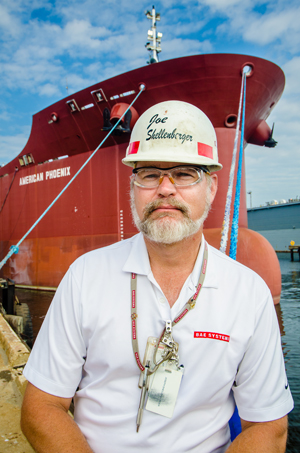 |
|
BAE Systems project manager Joe Shellenberger. |
The most visible was the purchase in May 2010 of the yard where the vessel was sitting by BAE Systems from Atlantic Marine Holding, part of a $352 million deal involving shipyards in three states. BAE, a British defense and aerospace giant, came in with a hard-charging attitude to business and experience with ship repair in other U.S. markets. Vic Rhoades, BAE’s new director in Alabama, a veteran of its repair yard in Hawaii, was convinced the tanker had a future.
Less visible was Alterna Capital Partners, a Connecticut-based private equity firm with the ambitious goal of investing $100 million to $150 million in the shipping industry within two years.
Harry Toll, a managing partner at Alterna, said his firm was exploring new construction in another Jones Act sector with a partner, Mid Ocean Marine, headed by Nickel and Volckert van Reesema, when they started paying attention to the bankruptcy of AHL Shipping, the operator that had placed the original order for the vessels, which it then planned to charter to Shell.
Toll drove down the access road and into the Mobile shipyard in October 2010. It was the first time he had seen the vessel.
“I have to say the ship looked very forlorn,” he said in an interview. “It had no deckhouse. It had no forecastle … The hull had some superficial rust on it; it was still gray from the pickling of the steel.” His first thought: “Maybe we made a mistake driving down here!”
On board, however, the partners changed their mind.
“Everywhere we turned, we said, holy mackerel!” Toll recalls. “They really went over the top trying to make this the best ship ever built in the U.S.
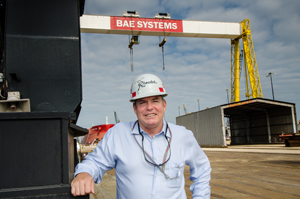 |
|
Vic Rhoades, director of BAE Systems Southeast Shipyards Alabama. |
“It was extremely impressive. It was also really daunting because we could really see how much work remained to be done.”
At auction, a joint partnership called Mid Ocean Tanker Co. bought the vessel for $12.65 million (it would cost an estimated $60 million preparing it for delivery). A fund controlled by Alterna owns 80 percent of the owning partnership; the van Reesemas, through Mid Ocean Marine, control the rest.
In the end, said Toll, many of the original contractors stuck with the project. L-3, for example, lived up to its commitment to make the propulsion system integrated and functional despite the stops and starts. One man, he said, was critical: Vic Rhoades. At one meeting, the parties involved sat across the table from one another “wondering what the other was really going to do,” said Toll. Rhoades “stood up and said that he could make it happen. And he did.”
If American Phoenix marks the rebirth of a vessel, Rhoades is convinced it can mark the rebirth of the yard as well. In a wide-ranging interview that moved from his office overlooking the dry docks to the gantry crane in the yard (“We can move 275-ton modules”), he stresses his goal over and over again: “We intend to be the premier Tier-2 shipyard in the U.S.”
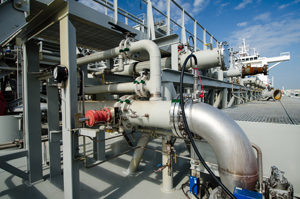 |
|
The pipe racks on the cargo deck are offset to the port side instead of running down the centerline. |
The new tanker, he said, sends a signal. “We do a lot of repairing, we do a lot of conversions and overhauls, but we’ve never built a ship. American Phoenix was our jumping-off point to get the industry to understand that we’re serious.”
When Rhoades was speaking in June, the future looked uncertain. The dry docks were busy with repair work, but with American Phoenix close to delivery, the only new construction in the 423-acre yard was an 8,500-cubic-yard hopper dredge for Weeks Marine, and the shops were virtually empty.
Within days, that changed. In late June the yard picked up a contract from Great Lakes Dredge & Dock for two dump scows, and in August it announced the signing of a contract to build two 288-foot platform supply vessels for GulfMark at an expected cost of $48 million each. The delivery dates are mid-2014 and 2015 — good news for BAE Systems’ 650 full-time employees.
Meanwhile, American Phoenix sails on. Under contract to Koch Industries, it is doing what it was designed for, transporting petroleum to Florida, Texas, New Jersey, a one-off anomaly in a market dominated by off-the-shelf designs. One thing everyone agrees on: There’s not much appetite for building another vessel like it. No one could afford it.

